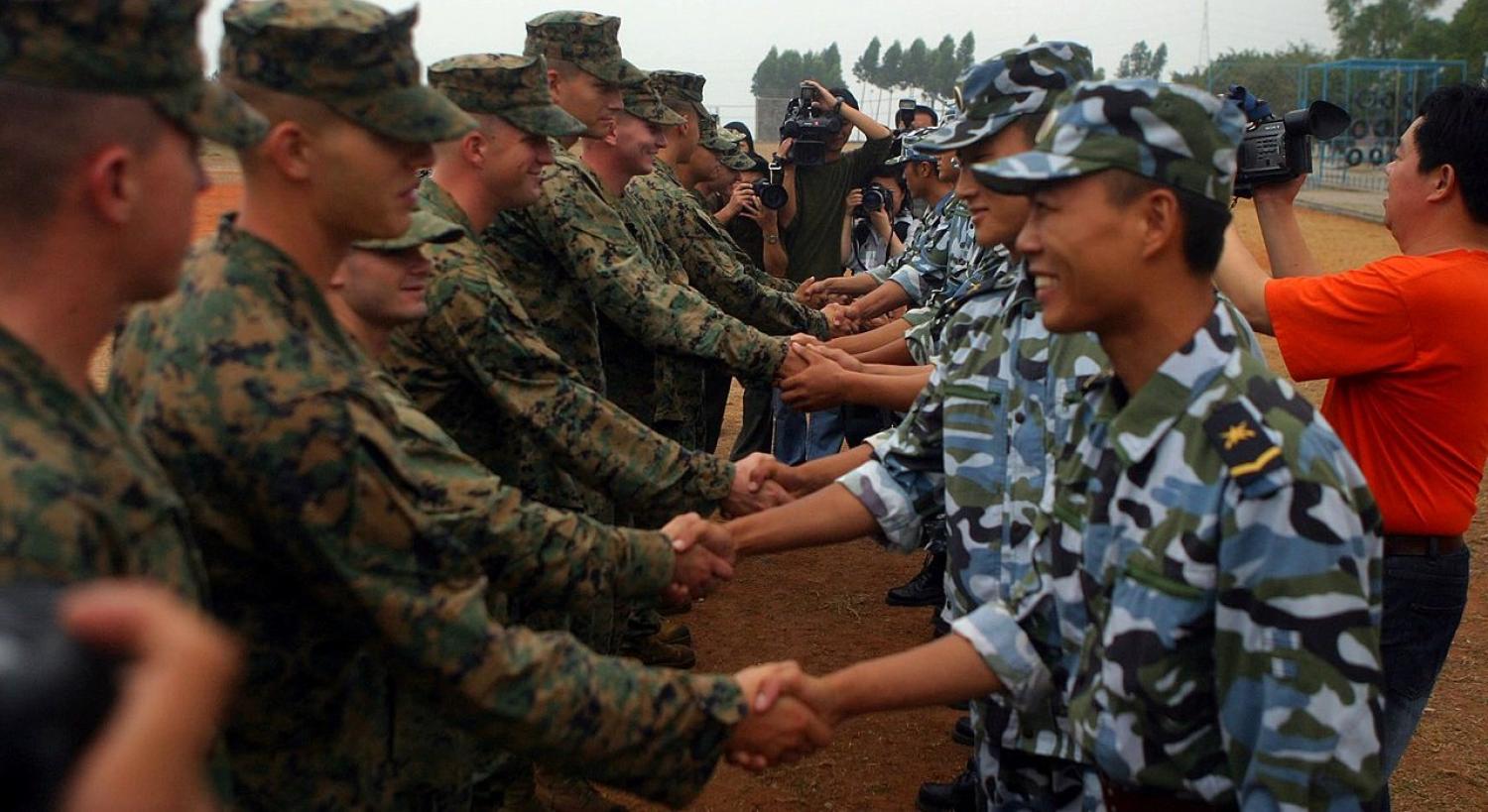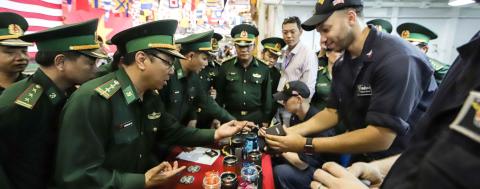It might surprise the People’s Liberation Army (PLA) to learn they’ve short-changed themselves on amphibious capability. Sam Roggeveen wrote on The Interpreter recently (“Why China isn’t planning to storm Taiwan’s beaches”) that “China’s navy has grown dramatically over the past two decades, but with one surprising exception: its amphibious forces”.
In terms of the newest modern amphibious ships, it’s true China has only four large Type 071 amphibious transport docks; however, two more are in the works, and the bigger Type 075 helicopter carrier is reportedly now also in production.
But here’s what matters most: an amphibious ship needn’t be the newest model or, as the Americans seem to think, cost $1 billion each. The PLA Navy already has around 50 older amphibious ships that are more than capable of making the trip across the Taiwan Strait and disgorging PLA Marines, and by 2030 it will have more than 70 amphibious ships in total.
Additionally, China has a boatload (to use the precise term) of commercial ferries, roll-on/roll-off ships and other ad hoc amphibious vessels, including barges, that will serve the purpose of getting across the Strait. And the PLA Navy has experience incorporating civilian vessels into military exercises.
To suggest that because the PLA Navy only has a few of the most modern amphibious ships they don’t have the “lift” to get enough troops and equipment ashore on Taiwan is perhaps missing the bigger picture. With the right weather and sea conditions, and with proper “cover”, the Chinese could get a few tens of thousand troops ashore in a day.
The PLA Marine Corps is scheduled to increase from approximately 20,000 to 100,000 Marines. This will take some time, although with the Chinese it’s usually less time than experts predict. And often overlooked is the fact the PLA already has 50–60,000 amphibiously trained mechanised infantry. These army “marines” are intended as follow-on forces after the Marines seize a beachhead.
Just as importantly, the Chinese are doing the necessary training and planning needed to master amphibious operations. President Xi Jinping told the PLA to prepare to take on Taiwan by 2020, and it is doing so.
Does anyone think China won’t figure this out? Consider how well the PLA has done with aircraft carrier operations, which much of the Western defence commentariat and even many military officers and analysts said would take years, if not decades. Amphibious operations are no harder than carrier operations.
Another point to consider is that an amphibious assault on Taiwan would only be one part of a multifaceted effort, including missile assaults, special forces operations, and possibly an airborne assault, paralysing cyberattacks, and efforts to cut communications and satellite links. The PLA Air Force would swarm and eventually render Taiwan’s air force extinct, in addition to hammering Taiwanese military and civilian targets.
PLA Navy submarines and surface combatants would also be out in force, dominating the Taiwan Strait and maybe the east side of Formosa too. Slipping in the amphibious assault force in this environment is feasible, in my opinion.
Taiwan would be well advised to improve its defences and make itself a tough nut to crack, although this requires far more US assistance than seen to date, including political, economic, psychological, and military support.
Of course, China would prefer to economically and politically strangle and intimidate Taiwan until it submits. But if it doesn’t, in purely military terms (and without considering the political and economic damage to the PRC from such an attack, and the possibility of US and Japanese forces stepping in) an amphibious assault is feasible.
Could China do it today? That would be tough but doable. Could China do it five years from now? Think of where the PLA was five years ago compared to where it is today. Unless the current trend is interrupted, Chinese capabilities will only improve.
But this focus on whether China can launch a successful amphibious assault on Taiwan misses something equally important. Within a few years, the Chinese equivalent of a US Navy-Marine Corps Amphibious Ready Group will be making the rounds in Asia, including the Indian Ocean.
Attacking Taiwan would be going for broke, and would provoke a harsh reaction. But an amphibious force out and about, conducting bilateral and multilateral training exercises and show-the-flag port visits, greatly expands Chinese military presence and influence. It also lends a sense that China will inexorably dominate Asia, gradually overshadowing or pushing out the US. The message to Asian nations will be to submit to inevitable Chinese domination.
Six or seven years ago, I read an article in a Chinese periodical that effectively said, “Aircraft carriers are nice, but what’s really useful are amphibious ships”. Westerners routinely underestimate China, but speaking as a former Marine officer, one might fairly say Beijing understands the importance of amphibious forces at least as well as the US Navy, and sometimes “gets it” even better.

